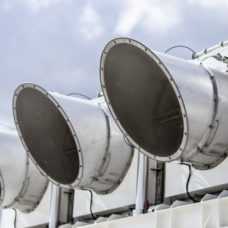NASA just succeeded in switching on and testing laser interferometers aboard two climate monitoring satellites.
Life on Earth, which could be as old as the planet itself, could only be possible thanks to the meeting of several conditions in a system that depends on the Sun and its energy.
Without a balance between the energy received and the energy returned to space, the planetary system would go haywire and fail to maintain a viable climate to sustain the biosphere.
A lot of elements weigh on Earth’s climate system like oceans, air, vegetation, and, recently, human activities.
The Earth’s climate rests on mechanisms that are complex and delicate at the same time.
To tackle climate change and investigate its effects more efficiently, climate researchers are trying to better understand how our planet’s climate works by monitoring it from space.
The European Space Agency, for example, now has five climate-monitoring satellites dedicated for land, marine, and atmospheric observation.
Read More: ESA’s Sentinel-5P Instrument Shows the Scale of Air Pollution on Earth
NASA has a different initiative in this regard. For its latest climate monitoring mission, the satellites have successfully tested their laser gear.
NASA’s GRACE-Follow on Mission
As part of its Earth System Science Pathfinder Program (ESSP), NASA launched the GRACE mission back in 2002 in partnership with the German Research Institute for Aviation and Space Flight (DLR).
The goal of the GRACE (Gravity Recovery and Climate Experiment) mission is to enhance NASA’s capabilities at mapping gravitational fields.
Originally intended to work for only five years, the GRACE mission has extended well beyond its scheduled lifetime and kept running for 15 years.
GRACE was in need of a follow-up mission, and this is where GRACE-FO comes in.
GRACE-FO (Gravity Recovery and Climate Experiment Follow-On) is like an update to the ongoing research project.
The GRACE-FO mission is jointly managed by NASA’s Jet Propulsion Laboratory and the German Research Centre for Geosciences with a host of other collaborators who contributed to different technical aspects of the project.
The pair of satellites that make up GRACE-FO were put into orbit on May 22 by SpaceX, and three weeks later, on June 13, they fired their first laser beam.
NASA announced that the two new climate-monitoring satellites switched on their laser interferometers that will allow them to communicate as they orbit Earth one after the other.
The laser instruments, known as Laser Ranging Interferometers (LRI), are an experimental technology that will enable NASA track the variations in the distance between the two satellites caused by the subtle fluctuations of Earth’s gravitational pull.
LRIs have a greater accuracy than the instruments used for the original GRACE mission as the new technology is based on laser instead of microwave wavelength.
“The LRI is a breakthrough for precision distance measurements in space,” said NASA JPL’s Kirk McKenzie. “It’s the first inter-spacecraft laser interferometer and the culmination of about a decade of NASA and German-funded research and development.”
Besides keeping a constant check on the planet’s gravitational fields, the twin spacecraft and LRI instruments aboard them will also generate data to help climatologists monitor groundwater levels, rising sea levels, and the melting of the ice sheets.



















Comments (0)
Most Recent